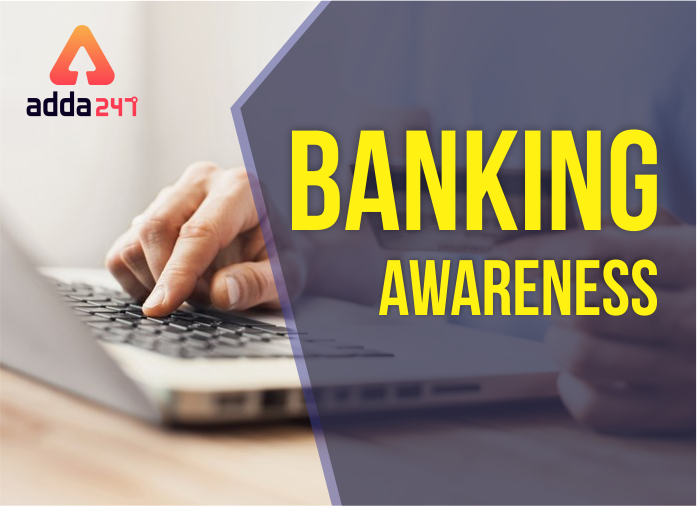Q1. When the loan is granted for purchase of white goods it is called ________.
(a) Consumption loan
(b) White goods loan
(c) Consumer durable loan
(d) Business loan
(e) Proprietary loan
S1. Ans.(c)
Sol. White Goods- large electrical goods used domestically such as refrigerators and washing machines, typically white in colour. A consumer durable loan is a finance option for purchase of household items like washing machines, refrigerators, air-conditioner, LED TVs, microwaves, furniture, clothes or grocery.
Q2. Structure of Basel II is based on how many pillars?
(a) Two
(b) Ten
(c) Four
(d) Five
(e) Three
S2. Ans.(e)
Sol. Basel II uses a “three pillars” concept – (1) minimum capital requirements (addressing risk), (2) supervisory review and (3) market discipline.
Q3. What is the full form of FRBM?
(a) Financial Responsibility and Business Management
(b) Fiscal Responsibility and Business Management
(c) Financial Responsibility and Budget Management
(d) Fiscal Responsibility and Budget Management
(e) Formal Responsibility and Business Management
S3. Ans.(d)
Sol. The Fiscal Responsibility and Budget Management (FRBM) Act was enacted in 2003 which set targets for the government to reduce fiscal deficits.
Q4. Investor Protection Fund is proposed to be set up with amounts collected by the market regulator ____________ by way of fines and penalties.
(a) RBI
(b) SIDBI
(c) Bombay Stock Exchange
(d) SEBI
(e) Ministry of Commerce & Industry
S4. Ans.(d)
Sol. The Government stated an Investor Protection Fund is proposed to be set up with amounts collected by the market regulator Sebi by way of fines and penalties. Currently, fines and penalties collected by SEBI are credited to the Consolidated Fund of India as required under Securities Contracts (Regulations) Act, 1956, the Sebi Act, 1992 and the Depositories Act, 1996.
Q5. The CRR and SLR maintenance is on the-
(a) NDTL
(b) DTL
(c) Total Deposits
(d) CASA
(e) None of the given options is true
S5. Ans.(a)
Sol. CRR or Cash Reserve Ratio, as the name suggests, is the minimum fraction of the total deposits that all commercial banks are required to maintain in cash and keep with the Reserve Bank of India (RBI). The term “deposits” refers to the net demand and time liabilities of a bank also known as NDTL.
Q6. Reserve Bank of India was nationalised in?
(a) 1945
(b) 1949
(c) 1950
(d) 1955
(e) 1935
S6. Ans.(b)
Sol. The Reserve Bank of India was nationalised with effect from 1st January, 1949 on the basis of the Reserve Bank of India (Transfer to Public Ownership) Act, 1948. All shares in the capital of the Bank were deemed transferred to the Central Government on payment of a suitable compensation.
Q7. Which of the following is the most liquid money?
(a) M1
(b) M2
(c) Securities
(d) M3
(e) Call Money
S7. Ans.(a)
Sol. The most liquid portions of the money supply are measured by M1 because it contains currency and assets that either are, or can be quickly converted to, cash.
Q8. Who decides the value and volume of bank notes to be printed and on what basis?
(a) Finance Ministry
(b) Planning Commission
(c) RBI
(d) Stock Exchange
(e) None of the given options is true
S8. Ans.(c)
Sol. The Reserve Bank of India (RBI), decides the denomination of notes to be printed within the purview of “RBI Act of 1934”.
Q9. What is the purpose of KYC in banking?
(a) It is used for customer identification
(b) It is used for increasing the CRR of banks
(c) It is used against money laundering
(d) It is used by the central bank to control liquidity
(e) Both (a) and (c)
S9. Ans.(e)
Sol. The objective of KYC guidelines is to prevent banks from being used, intentionally or unintentionally, by criminal elements for money laundering activities.
Q10. Which of the following is not a member of the World Bank Group?
(a) International Bank of Reconstruction and Development
(b) International Development Association
(c) Bank of International Settlement
(d) International Finance Corporation
(e) None of the given options is true
S10. Ans.(c)
Sol. The World Bank Group consists of five organizations:
The International Bank for Reconstruction and Development (IBRD)
The International Development Association (IDA)
The International Finance Corporation (IFC)
The Multilateral Investment Guarantee Agency (MIGA)
The International Centre for Settlement of Investment Disputes (ICSID)
Q11. Which of the following types of cards is free from credit risk?
(a) Credit card
(b) Debit card
(c) Both (a) and (b)
(d) Prepaid cards
(e) Both (a) and (d)
S11. Ans.(b)
Sol. Debit card is free from credit risk.
Q12. What is Pledge in Banking?
(a) Advance against goods
(b) Open working capital limits
(c) Bailment of goods as security for payment of a debt or performance of a promise
(d) All of the above
(e) None of the given options is true
S12. Ans.(c)
Sol. Cash deposit or placing of owned property by a debtor (the pledger) to a creditor (the pledgee) as a security for a loan or obligation. The pledgee has an implied right to confiscate and/or sell the pledged property to satisfy his or her claim in case of a default.
Q13. Inflation refers to a fall in the value of money. Which of the following is the key measure of inflation in India?
(a) Consumer price index
(b) Wholesale price index
(c) Personal consumption expenditures price index
(d) GDP Deflator
(e) All of the above
S13. Ans.(b)
Sol. In India, the wholesale price index (WPI) is the main measure of inflation.
Q14. The largest number of commercial banks offices is located in?
(a) Karnataka
(b) Maharashtra
(c) Tamil Nadu
(d) Uttar Pradesh
(e) Rajasthan
S14. Ans.(d)
Sol. The largest number of commercial banks offices is located in Uttar Pradesh.
Q15. A financial contract that derives its value from another asset or an index of asset values in known as-
(a) Insurance policy
(b) Security
(c) Derivative
(d) Share
(e) None of the given options is true
S15. Ans.(c)
Sol. A derivative is a financial security with a value that is reliant upon or derived from, an underlying asset or group of assets—a benchmark. The derivative itself is a contract between two or more parties, and the derivative derives its price from fluctuations in the underlying asset.
You may also like to Read:
More questions of banking awareness for bank exams
More Current affairs questions





 GA Capsule for SBI Clerk Mains 2025, Dow...
GA Capsule for SBI Clerk Mains 2025, Dow...
 The Hindu Review October 2022: Download ...
The Hindu Review October 2022: Download ...
 Without These Documents, Your Bank Exam ...
Without These Documents, Your Bank Exam ...





